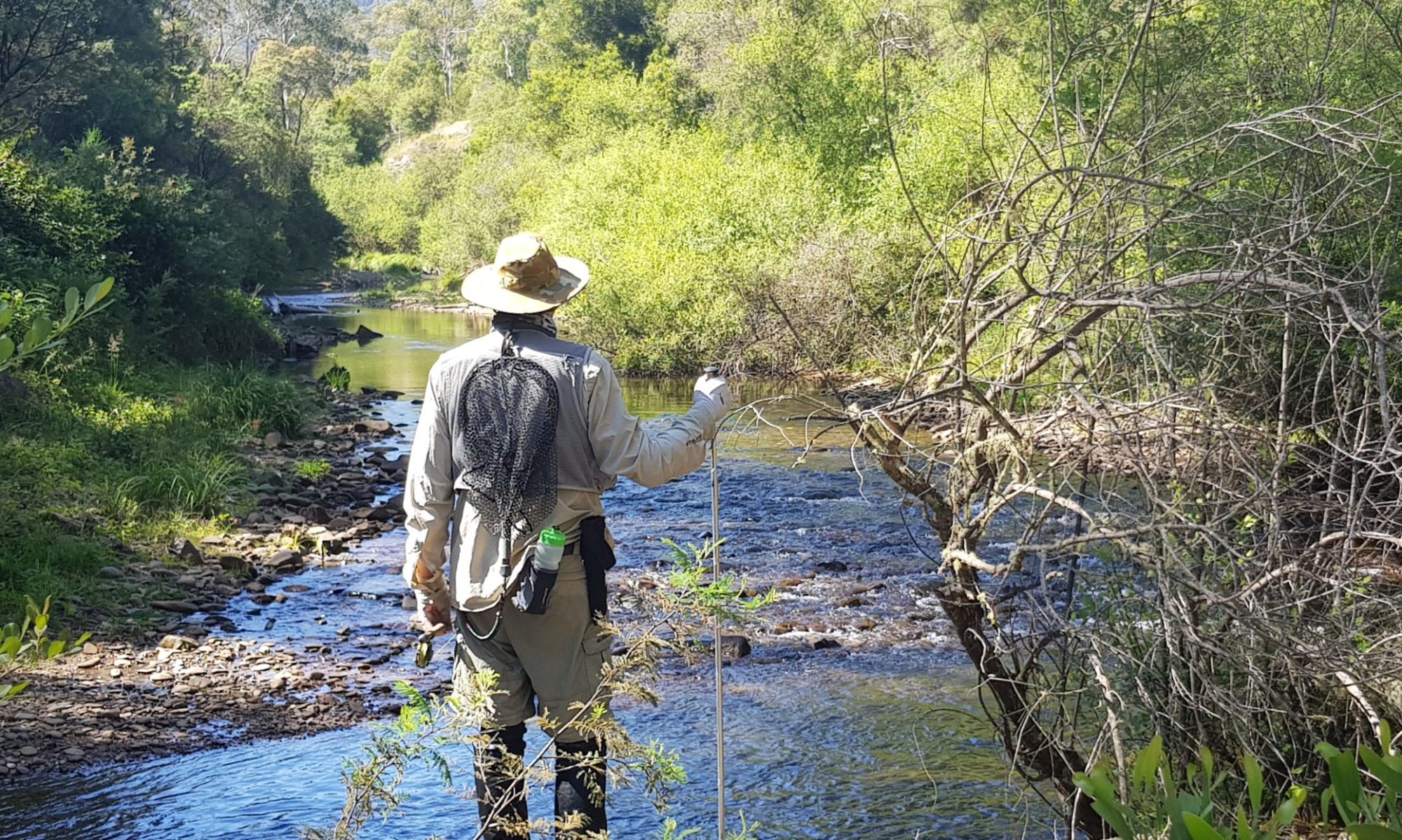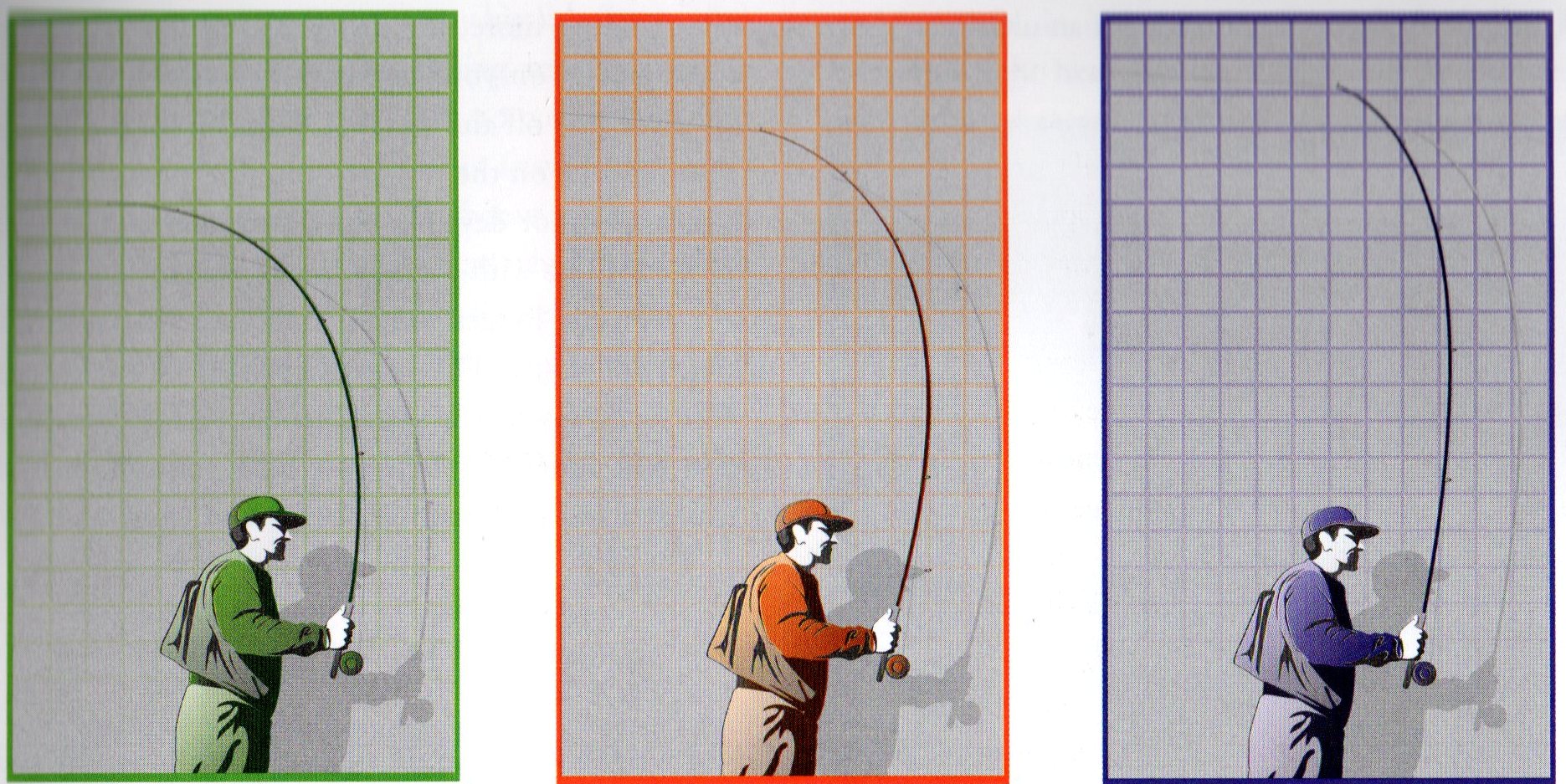By Phil Magness.
The basic components of a fly rod are: action, length and weighting. Choosing the correct fly rod will be determined by a combination of these as determined by the type of fishing you are planning on doing. Your local fly fishing shop or experienced members of the club (and Committee) will be a great source of advice for newer members.
Action: This is how much the fly rod bends (flexes) during the casting stroke, and how long it takes to recover after the stroke.
- A slow action rod bends all the way from the base to the tip and is useful for close-range casting and delicate presentations. It feels slower and heavier and takes a while to recover.
- A fast action rod bends more towards the tip. It recovers very quickly and allows for longer and faster casts. It is ideal for more experienced casters.
- A medium action rod is a compromise between slow and fast and is ideally suited to beginners of the sport.
The following shows the differences between the different action types, from slow action on the left to fast action on the right (source: The Orvis Fly Fishing Guide 2007):
Weight: Fly rods have a weight. You’ll often see 3wt, 4wt, 5wt to refer to the different types of weighting. The lower the number, the lighter the rod and vice versa. The rod weight aligns with the line weight, i.e. a 5wt rod will (usually) be casting 5wt line. Whilst exceptions can exist, this is a good general rule for beginners. A discussion of the types of fly lines can be found under the Fly Lines tab in “Be A Fly Fisher”. As a rough guide:
- 2wt or 3wt – suits small river fishing where you are not casting very far and the fish are smaller. A perfect example is the Toorongo and Steavenson rivers.
- 4wt – ideal for slightly larger rivers such as the Rubicon, Howqua and Delatite rivers.
- 5wt – a great generalist rod that is well suited for medium to larger rivers as well as lakes where you need a longer cast. I’d use a 5wt on the Goulburn river , lakes in Tasmania or New Zealand.
- 6wt – ideal for much larger streams such as those in New Zealand as well as lakes. This is a heavier rod that can be particularly useful when requiring a long cast into the wind.
Length: The length of a fly rod is also dependent on the type of fishing that you will be doing. A 7’6″ rod is ideal for small stream fishing. 8’6″ or 9″ are pretty much the average lengths that suits most conditions. 10″ and above are for more specialist fishing, such as Czech nymphing.
For beginners to the sport who can only afford one rod – you are most likely to use a 9″, 5wt, medium action rod. This will allow you to fish most rivers and lakes. As always though – speak to the club and your local fly fishing store to see what’s best for you.
The following links may also provide you with some guidance:


